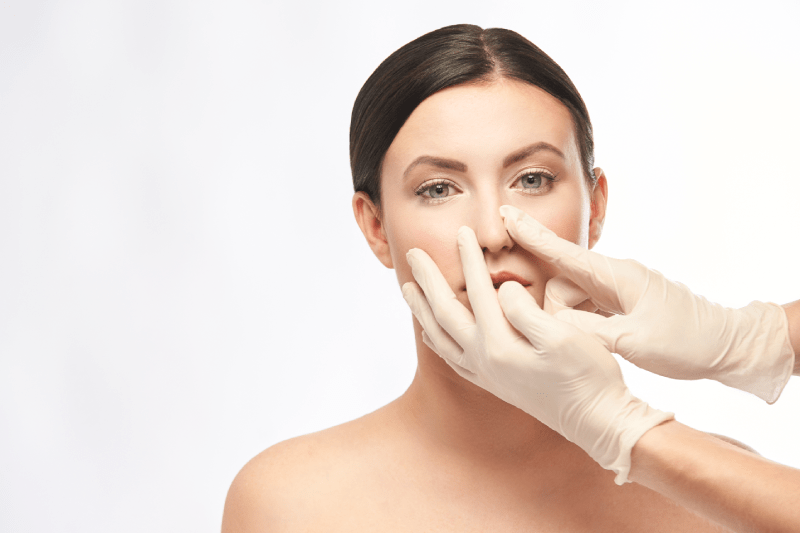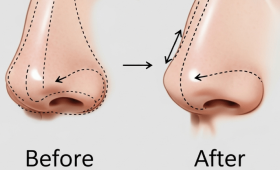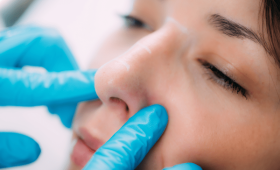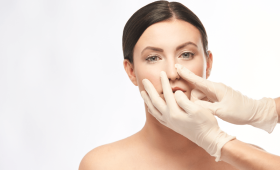What Is Rhinoplasty?
Rhinoplasty is a surgical procedure performed to improve the shape, size, and proportion of the nose. The goal of this surgery is not only to address aesthetic concerns but also to resolve breathing issues and correct functional disorders. The nasal structure is reshaped by working on the nasal bone, cartilage, and soft tissues. A successful rhinoplasty aims to provide a natural-looking nose that is harmonious with the other features of the face. This personalized planning and application process helps increase the individual’s self-confidence and ensures healthier breathing. You can contact Cure Holiday specialists to get more information about this complex process and to evaluate your specific situation.
How Is Rhinoplasty Surgery Performed?
Rhinoplasty surgery is generally performed under general anesthesia, with the patient fully asleep. Essentially, two different techniques are used: “open” and “closed.” In open rhinoplasty, a small incision is made in the columella, the area between the nostrils, while in closed rhinoplasty, all incisions are hidden inside the nostrils. The surgeon separates the nasal skin from the underlying bone and cartilage structure according to the chosen technique, then reshapes the nose by removing excess cartilage or bone, correcting deviations, or adding grafts to deficient areas. Once all adjustments are complete, the skin is repositioned and the incisions are sutured, which requires each case to be handled with unique precision.
Who Is Rhinoplasty Applied To?
Rhinoplasty can be applied to healthy adults who are unhappy with the appearance of their nose and feel this situation negatively affects their daily life, self-confidence, or social relationships. It also offers a functional solution for patients experiencing difficulty breathing due to structural deformities caused by nasal deviation (septal deviation) or trauma. One of the most important criteria for surgery is that the patient has completed their physical development; this generally corresponds to around 16 years of age for girls and 17-18 years for boys. The patient’s realistic expectations and overall health suitability for surgery are also crucial determinants in the decision.
In Which Situations Should Rhinoplasty Be Performed?
Rhinoplasty should be performed when both aesthetic and functional needs are present. Aesthetically, the most common reasons include a humped appearance on the bridge of the nose, a droopy, upturned, or wide nasal tip, or a nose that is disproportionate to the face. Functionally, rhinoplasty may become necessary for the treatment of respiratory problems such as constant nasal blockage, snoring, or chronic sinusitis due to septal deviation (deviation of the nasal septum). The decision for surgery should be made after a detailed medical evaluation, based on the need to improve the person’s quality of life and achieve healthier breathing.
What Are The Types Of Rhinoplasty Surgery?
Rhinoplasty is primarily divided into two main types based on the surgical approach used: open and closed. Open Rhinoplasty is preferred for complex corrections as it provides a wider field of view through a small incision at the nasal tip. Closed Rhinoplasty, on the other hand, leaves no visible external scar as all incisions remain inside the nose, and it is suitable for simpler aesthetic corrections. Beyond these, revision rhinoplasty refers to corrective surgeries performed for patients who have had a previous operation and are not satisfied with the result. Additionally, techniques involving ultrasonic devices for bone cutting, such as Piezo surgery, are among the sub-types of modern rhinoplasty, offering a more controlled and less traumatic process.
Things To Know Before Rhinoplasty?
Before rhinoplasty, there are important steps patients must know and follow. Smoking and alcohol consumption must be strictly stopped at least two weeks before the surgery, as they can negatively impact the healing process. Furthermore, blood-thinning medications like aspirin and ibuprofen, and certain vitamin supplements, which can increase bleeding, should be discontinued under medical supervision. Attention should be paid to diet, and plenty of water should be consumed. Most importantly, detailed and open communication with the surgeon about surgical expectations should ensure that the results will be harmonious with your face and look natural. As Cure Holiday, we help you organize all the details that will guide you through your preparation process.
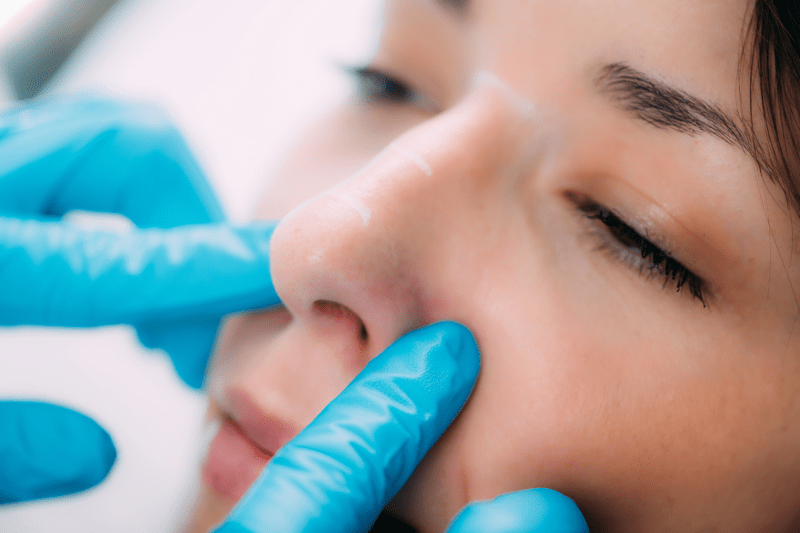
How Long Does Rhinoplasty Surgery Take?
The duration of rhinoplasty surgery varies depending on the scope of the corrections to be made and the technique preferred by the surgeon. A closed operation involving a simple aesthetic touch, working only on the cartilage, can usually be completed in about one and a half to two hours. However, more complex procedures such as septal deviation correction, breaking and reshaping the nasal bone, using grafts, or revision rhinoplasty to correct a previously performed surgery, may take three to four hours or sometimes longer. Therefore, the best way to accurately determine the surgery duration is to consult with your surgeon one-on-one and discuss the planned procedures in detail.
When Is The Rhinoplasty Patient Discharged From The Hospital?
Rhinoplasty patients are usually discharged from the hospital on the evening of the surgery or the following morning, depending on the magnitude of the operation and their general health condition. This typically involves only an overnight hospital stay, and it is crucial to closely monitor the patient during this period to ensure they are fully recovered from the effects of anesthesia and their vital functions are stable. Taking care to rest at home and apply recommended ice packs during the first few days after discharge will accelerate the healing process. Cure Holiday meticulously plans all necessary transfer and accommodation arrangements for a comfortable post-discharge period on your behalf.
Is An Intranasal Tampon Used In Rhinoplasty?
In modern rhinoplasty techniques, the use of classic intranasal tampons, which were once common and could be painful to remove, has significantly decreased. Today, many surgeons prefer to use special silicone splints or tampons with air channels. These tampons both support the internal structure of the nose and facilitate the patient’s breathing, which significantly increases patient comfort. Even if tampons are used, most are kept for a short period, generally between 24 and 48 hours. In some advanced techniques, it may not be necessary to use any tampon at all, thanks to intranasal sutures or special adhesives.
Does The Patient Experience A Lot Of Pain After Aesthetic Surgery?
Patients generally do not experience the severe pain they might expect after aesthetic nose surgery. Thanks to modern anesthesia techniques and long-acting pain relievers administered during surgery, most patients report only a mild feeling of pressure, discomfort, or fullness. This discomfort can usually be easily controlled with standard pain medications. Instead of severe pain, patients may struggle more with breathing through their mouth due to nasal congestion. Although pain thresholds vary from person to person, the post-operative period is not as difficult as imagined and subsides significantly within a few days.
Will There Be Bruising Or Swelling?
After rhinoplasty, especially when the nasal bone is manipulated, some bruising and swelling around the eyes and on the nose are quite normal and expected. However, thanks to modern surgical techniques, particularly minimally invasive methods like Piezo surgery, this bruising and swelling are much less severe and shorter-lived compared to the past. The majority of the swelling peaks within the first 48 hours and generally begins to rapidly decrease by the end of the first week. Bruises, on the other hand, disappear completely within a few weeks. Regular ice application and keeping the head elevated while lying down during the first days play a critical role in minimizing edema and bruising.
What Should Be Considered After Rhinoplasty?
What needs to be considered during the recovery process after rhinoplasty is vital for a successful outcome. Patients should sleep with their heads elevated for the first few days and must avoid heavy exercise, bending over, and straining, especially during the first week. It is strictly forbidden to take any blow to the nose; this applies even after the cast or splint is removed. The use of glasses should be limited for the first few months to prevent pressure on the nose. Attention should be paid to nutrition, and salt intake should be reduced to prevent edema formation. Furthermore, protecting the nose from the sun and regularly using the ointments and medications recommended by the surgeon should not be forgotten.
Is There An Age Limit For Rhinoplasty Surgery?
Yes, there is a minimum age limit for rhinoplasty surgery. The main reason for this limit is to wait for the complete development of the nose and facial bones. This development is usually completed around the age of 16 in girls and between 17 and 18 years in boys. Surgeries performed before these ages may lead to undesirable shape changes or the need for a second operation later, as the nasal structure is still developing. While there is no strict upper age limit, any adult can be evaluated for rhinoplasty, provided their general health condition and suitability for anesthesia permit it.
Which Surgeries Can Be Performed Along With Rhinoplasty?
Although rhinoplasty usually has only an aesthetic purpose, it can be combined with other surgical procedures to solve functional problems. The most common accompanying surgery is Septoplasty, which corrects septal deviation. This combination allows the patient to have both a more aesthetic nose and comfortable breathing. Furthermore, other facial rejuvenation procedures such as turbinate reduction (concha surgery), Endoscopic Sinus Surgery (ESS) for chronic sinusitis treatment, or chin tip (mentoplasty) and cheekbone aesthetics can also be performed in the same session. These integrated approaches allow for multi-faceted results within a single recovery period.
What Is The Most Appropriate Season For Rhinoplasty Surgeries?
Rhinoplasty surgeries are suitable for any month of the year, but some seasons have their own advantages and disadvantages. Many people prefer the winter months or autumn, as it is easier to take a break from social life. Summer months may be less recommended by some physicians due to the risk of increased edema formation in hot weather and the need to avoid the harmful effects of the sun. Sun protection is critical to prevent pigmentation (discoloration) of the healing nose. The important thing is to strictly adhere to the surgeon’s recommendations regardless of the season, and especially not to neglect the use of high-factor sun protection creams.
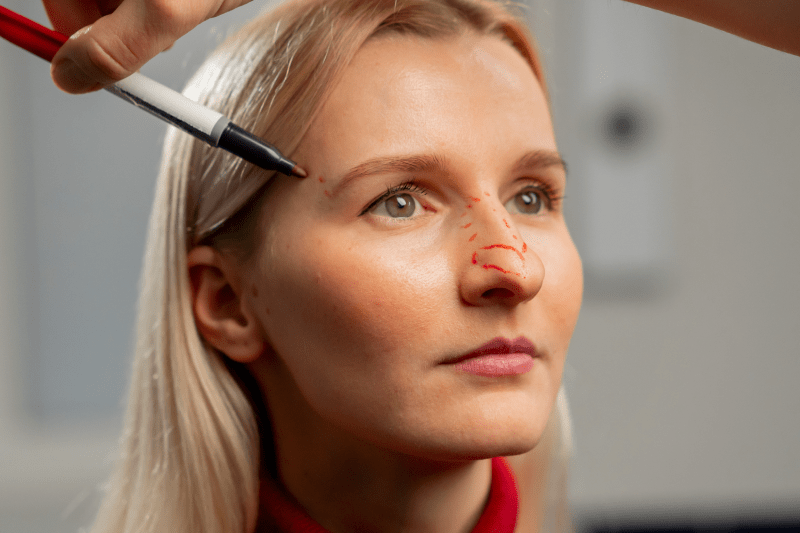
Is A Nose Job Popular In Turkey?
Yes, Turkey has become a world-class center in medical tourism, especially for rhinoplasty, in recent years, and thus rhinoplasty is extremely popular in Turkey. The experience of Turkish surgeons, modern hospital infrastructure, and competitive prices they offer are a major draw for patients from both European and Middle Eastern countries. Especially the success of experienced Turkish plastic surgeons in achieving natural and harmonious results that match the patient’s face structure is internationally recognized. This popularity, combined with the country’s holiday opportunities, allows patients to combine treatment with rest and cultural exploration, which increases the importance of intermediary organizations like Cure Holiday.
Is Turkey A Good Choice For Nose Jobs?
Turkey is definitely an excellent choice for nose jobs. There are several key reasons behind Turkey’s good reputation in this field. Turkish surgeons have a world-class high success rate in both aesthetic and functional rhinoplasty. Furthermore, hospitals and clinics are equipped with state-of-the-art technology and hold international accreditations. Most importantly, the similar quality of service is much more cost-effective compared to Western countries. This high quality-price balance is the biggest factor in international patients choosing Turkey. Cure Holiday combines this high-standard service with the most reliable institutions to offer it to you.
How Much Does A Nose Job Cost In Turkey?
The cost of rhinoplasty in Turkey is much more economical compared to European and North American countries, but a definitive price varies according to the surgical scope. Prices differ based on the surgeon’s experience, whether the surgery will be open or closed, whether it is a revision, and the city where the hospital is located. Generally, however, the costs in Turkey can be half or one-third the cost of an equivalent operation in the West. This price difference results not from the quality of the surgery but from the lower general living and operating costs in the country. I recommend contacting Cure Holiday to learn about current and personalized price packages.
How Much Does Ethnic Rhinoplasty Cost In Turkey?
Ethnic rhinoplasty aims to reshape the nasal structure of individuals from different ethnic backgrounds while preserving their cultural and facial-specific features. These types of surgeries may take slightly longer and be more technical than a standard rhinoplasty, as they often require more cartilage grafting and more detailed structural support. Therefore, the cost of ethnic rhinoplasty in Turkey may be slightly higher than standard rhinoplasty prices. However, Turkish pricing policy generally remains much more advantageous than Western countries even for such specialized operations. It is best to seek help from a specialized organization for the most accurate and transparent price information; for instance, Cure Holiday will assist you in this matter.
Does Rhinoplasty Price In Turkey Include Flights?
Whether flights are included in the rhinoplasty price entirely depends on the medical tourism package you choose and the agency you partner with. Many clinics or hospitals in Turkey offer basic packages that only include the surgery, hospital stay, and medical follow-up services, while medical tourism companies like Cure Holiday often create more comprehensive “all-inclusive” packages. These comprehensive packages may cover transportation, luxury hotel accommodation in Turkey, airport transfers, and sometimes even flight tickets for patients coming from abroad. To find out if flights are included, you should check the package contents in detail and directly consult with Cure Holiday for the most precise information.
Who Is The Best Turkish Doctor For Rhinoplasty?
It is impossible to name a single “best Turkish doctor” for rhinoplasty, as it depends on personal preferences, the surgeon’s specialization, and the patient’s expectations. There are many successful surgeons in Turkey who are internationally recognized, experienced, and proficient in various techniques. The important thing is to find a physician who has the most suitable experience for your nasal structure and desired outcome, with whom you can communicate, and whose references you trust. Cure Holiday provides professional support in connecting you with highly experienced and reliable surgeons who best meet your needs and expectations.
How Long Should One Stay In Turkey For Rhinoplasty?
The duration you need to stay in Turkey for rhinoplasty surgery generally ranges between 7 and 10 days. Patients are usually discharged one night after the surgery. The first 5 to 7 days of this period are spent waiting for the removal of the cast and stitches on the nose. Your surgeon will typically remove the cast and any tampons during the control session on the seventh day. Even after the cast is removed, staying for a few more days until your physician performs the final checks and grants you permission to travel is important for any possible early complications. This 7-10 day period is considered ideal for a safe start to recovery and a smooth return. Cure Holiday will meticulously plan your accommodation and appointments throughout this entire process.
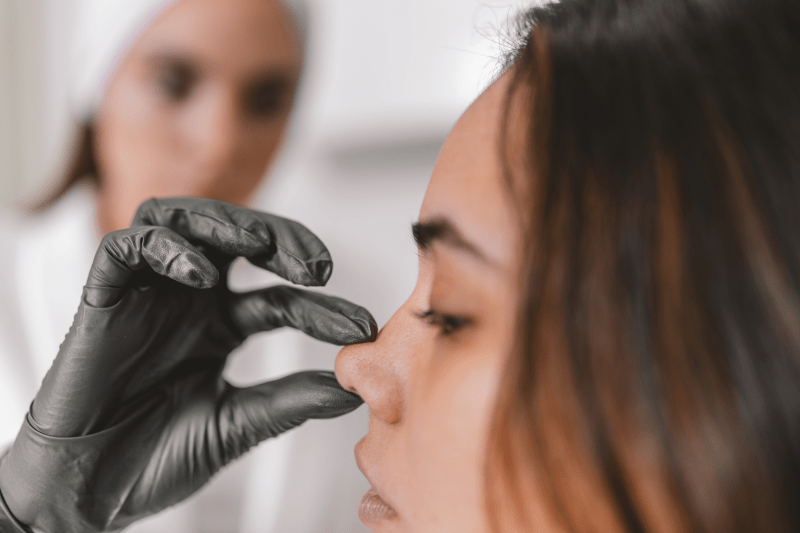
How Much Does A Nose Job Cost In Turkish Lira In Turkey?
The cost of rhinoplasty in Turkey in Turkish Lira can currently vary widely due to continuously changing economic conditions. The cost depends on exchange rate fluctuations, the quality of the hospital, the surgeon’s experience, and the technical details of the operation. To give a general idea, prices can start from tens of thousands of Turkish Lira and go up to hundreds of thousands of Turkish Lira for complex procedures like revisions. For this reason, package prices are usually offered in euros or dollars to international patients. The healthiest way to get the most accurate and current price quote in Turkish Lira is to specify the scope of your operation and request an updated quote from Cure Holiday.
Why Should I Get Rhinoplasty In Turkey?
The phrases “Rhinoplasty Turkey” or “Nose Job Turkey” refer to the recognition of Turkey as an international destination for rhinoplasty surgeries in the field of health tourism. This represents a concept where high standards of surgical quality, experienced specialists, and modern hospital conditions are combined with holiday opportunities and offered at competitive prices. Patients have the chance to explore the historical and natural beauties of Turkey during their post-treatment recovery period while receiving the aesthetic corrections they desire. These terms are key phrases, especially for patients from abroad who are seeking reliable and high-quality service, and Cure Holiday provides a solution at precisely this point.
Advantages Of Getting A Nose Job In Turkey
Turkey stands out as an international center for rhinoplasty; the fundamental advantages of this include offering significantly lower costs compared to Western countries, while providing access to highly experienced and expert surgeons trained in Europe and the US, hosting modern clinics with state-of-the-art technology, and offering comprehensive all-inclusive packages that cover international patients’ accommodation, transfers, and post-operative care. This allows patients to receive high-quality medical service at a more accessible price and have the opportunity to spend their recovery process in a rich cultural and touristic environment.
What Do All-Inclusive Rhinoplasty Packages In Kusadasi Include?
The all-inclusive rhinoplasty packages offered by Cure Holiday in Kusadasi cover almost everything international patients might need. Typically, these packages include the surgery fee, the surgeon’s and anesthetist’s fees, hospital and operating room expenses, all tests performed during the hospital stay after the surgery, necessary medications, and medical supplies. Furthermore, airport transfers, comfortable hotel accommodation in Kusadasi (for a specified period), all city transfers (between the hospital and hotel), and full-time interpreter services are an integral part of the package. This comprehensiveness allows patients to focus solely on their recovery and avoid surprise costs.
How Long Should The Stay In Kusadasi Be Approximately?
The minimum duration you need to stay in Kusadasi for rhinoplasty surgery is critically important for the smooth completion of post-operative follow-up and the removal of the splint/tampons. Most surgeons recommend that patients stay in Kusadasi for approximately 7 to 10 days after the surgery. During this period, you can be discharged from the hospital one day after the operation and spend the remaining days resting at the hotel. The splint and tampons are removed around the 5th to 7th day, your final check-up is done, and you can return home with safe travel permission from your surgeon. Cure Holiday’s standard packages are generally arranged to cover this 7-10 day accommodation.
How Are Airport Transfers Arranged Upon Arrival And Departure In Kusadasi?
Within the scope of all-inclusive packages, your airport transfers upon arrival and departure in Kusadasi are fully organized. The closest airports to Kusadasi are generally Izmir Adnan Menderes Airport (ADB) or sometimes Bodrum Milas Airport (BJV). After your and your companion’s flight information is submitted to Cure Holiday, you will be met at the airport by a professional driver holding a welcome sign with your name. Then, you will be transferred directly to your accommodation hotel or hospital in a comfortable and private vehicle. The same comfortable transfer service is planned for your departure, tailored to your flight time.
Kusadasi Rhinoplasty Treatment Cost
Rhinoplasty costs in Kusadasi vary greatly depending on many factors such as the surgeon’s experience, the scope of the surgery, the techniques to be used (e.g., Piezo/Ultrasonic), whether the surgery is primary or revision, the clinic’s location, and the hospital’s standard. On average, primary rhinoplasty operations are generally priced between €2,000 and €7,000 in all-inclusive packages for international patients. These prices are significantly lower compared to equivalent quality procedures in Western countries. These affordable costs may cover the entire surgical procedure, anesthesia, hospital stay, and sometimes accommodation and transfer services, while a precise price can only be determined after a doctor’s examination and a personalized treatment plan.
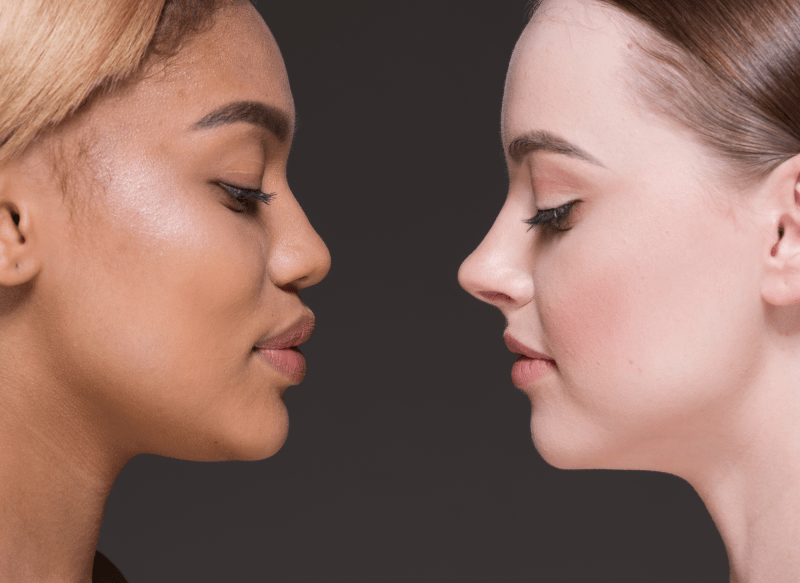
Why Should I Get Rhinoplasty In Kusadasi?
Getting rhinoplasty in Kusadasi combines Turkey’s general advantages in medical tourism with the Mediterranean climate and touristic appeal. The region offers access to the country’s high-quality healthcare services, such as experienced Turkish surgeons, modern clinic standards, and more affordable costs compared to other Western countries. At the same time, it allows patients to spend their recovery period in a peaceful coastal town, close to historical and natural beauties like ancient Ephesus, in complete privacy and in a holiday-like setting.
Why Cure Holiday
Choosing medical tourism intermediary organizations like “Cure Holiday” offers the advantage of greatly simplifying the generally complex international medical travel process. We collaborate with highly qualified Turkish surgeons and international-standard clinics to provide high-quality rhinoplasty opportunities at affordable costs. In addition, we organize “all-inclusive” packages for patients coming from abroad, covering logistical needs such as surgery, accommodation, airport transfers, and language support, ensuring patients can focus solely on their recovery. This allows our patients to concentrate only on their treatment and have a comfortable treatment process.
